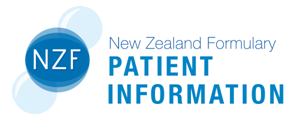What does it do?
Combined contraceptive tablets contain the hormones oestrogen and progestogen. They are used to prevent pregnancy or regulate your period. They may also be used to treat polycystic ovarian syndrome (PCOS) or acne.
Before you start
- Tell your doctor if you have heart, liver, or gallbladder problems, migraines, or high blood pressure.
- Tell your doctor if you have had a blood clot or stroke, or if you smoke.
- Women taking combined contraceptive tablets may have a small increased risk of breast cancer. Tell your doctor if you, or someone in your family, has ever had breast cancer.
How should you take it?
Your pack has 21 active hormone tablets. Some packs also have 7 inactive tablets.
When you first start, it is best to take a hormone tablet on the first day of your period. However, if you start within 5 days of the first day of your period, you are still protected from pregnancy straight away. If you start more than 5 days after the first day of your period, you will need to use condoms (or don’t have sex) for the next 7 days.
Take your tablet at the same time each day.
You can choose to take your tablets "continuously" (take the 21 hormone tablets, then start the next pack, skipping the 7 inactive tablets or your 7-day break). With this option you won't get a period and you are protected from getting pregnant unless you forget more than 8 tablets in a row.
See separate information sheet if you are taking Qlaira®.
What if you forget a dose?
If you miss 1 hormone tablet (over 24 hours late): take it as soon as you remember, then take the next hormone tablet at the usual time – even if this means taking 2 tablets together.
If you miss 2 or more hormone tablets: take the last tablet you missed as soon as you remember - even if this means taking 2 tablets together. Then take a hormone tablet for the next 7 days at the usual time. You need to use condoms (or don’t have sex) during these 7 days. If there are less than 7 hormone tablets left in the pack, finish these and then start your new pack straight away (skip the 7 inactive tablets or your 7-day break). If you are in the first week of your pack and you have had unprotected sex, you may need emergency contraception. Check with your health professional.
If you are unsure what to do, always check with your health professional.
See separate information sheet if you are taking Qlaira®.
Can you take other medicines?
Some medicines available without a prescription may react with combined contraceptive tablets including:
- orlistat (Xenical®)
Tell your pharmacist or doctor about all medicines or treatments that you may be taking, including vitamins, herbal products (e.g. St John's wort) or recreational drugs.
What side effects might you notice?
| Side Effects | Recommended action |
|---|---|
|
Symptoms of a blood clot including: sudden shortness of breath, swelling or pain in one leg Symptoms of a stroke including: sudden weakness of the face, arm or leg, especially on one side, face drooping, sudden changes in vision or speech, sudden loss of balance Severe headache Chest pain |
Tell your doctor immediately |
|
Changes in periods Mood changes, headache Sore breasts Weight gain Brown patches on the face Stomach upset |
Tell your doctor if troublesome |
If you notice any other effects, discuss them with your doctor or pharmacist.
Other information:
- If you vomit or have very bad diarrhoea within 2 hours of taking your tablet, take another one. If you can’t, or the vomiting or diarrhoea continues, use condoms (or don’t have sex) until you have taken a hormone tablet for 7 days in a row after the vomiting or diarrhoea has stopped (skip any inactive tablets).
- Combined contraceptive tablets do not protect you from sexually transmitted infections.
- Taking combined contraceptive tablets doesn't make it harder to get pregnant if you want to later on.
- Combined contraceptive tablets are also known as combined oral contraceptives (COC) and "the pill".
This leaflet contains important, but not all, information about this medicine.
Prepared by the MyMedicines Committee at Christchurch Hospital, Te Whatu Ora - Waitaha, New Zealand. March 2023
For more general information about this sheet and its contents, see: What does a My Medicines sheet cover?
Te Reo Māori
Te Reo Māori information sheets supported by Health Quality and Safety Commission New Zealand
Web links for this sheet in different formats
Click on buttons to copy web addresses for this leaflet:
If your browser does not automatically copy these links use its copy command instead.
About My Medicines
My Medicines Patient Information Leaflets (PILs) contain important, but not all, information about the medicines they describe.
For more information about the sheets, see: What does a My Medicines sheet cover?
My Medicines is developed by a team at Te Whatu Ora – Waitaha. Our team is made up of doctors, pharmacists, and a non-medical person to help us keep to plain language. We also discuss our information with specialist health professionals or groups when needed

